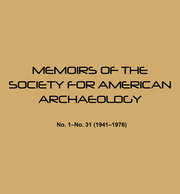No CrossRef data available.
Article contents
The Columbia-Fraser Region and the Northwest Coast
Published online by Cambridge University Press: 27 June 2018
Extract
The archaeology of the Columbia-Fraser region in the southern Northwest Coast is more complicated than early generalizations woilld have led one to suspect. Although there has been a constant adaptation to a river and marine economy, variations within that economy are marked and may be tentatively identified by the presence of bone and stone carving, and by the proportion.of stone to bone tools. Using these criteria, four cultural phases may be recognized: (1) Late Bone, which ties with historically known Indian groups and occurs throughout the region. It has wood sculpture but no carving in bone or stone; there are a few ground stone artifacts but chipped stone is rare. (2) Early Bone, which has the greatest antiquity and is apparently the richest culture of the region, having elaborate carving in bone and stone, beaten copper, a large variety of bone artifacts, and a number of stone pieces both ground and chipped.
- Type
- Research Article
- Information
- Copyright
- Copyright © Society for American Archaeology 1950
References
1 Drucker, 1943, p. 123.
2 Ibid., p. 127-8.
3 Ibid.
4 Strong, Schenck, and Steward, 1930, p. 145.
5 Ray, 1939.
6 Ibid., pp. 147-8.
7 Kroeber, 1939, p. 28.
8 Ibid., p. 30.
9 De Laguna, 1947, p. 13.
10 Kroeber, 1939, p. 28.
11 Ibid., p. 30.
12 De Laguna, 1947, p. 12.


